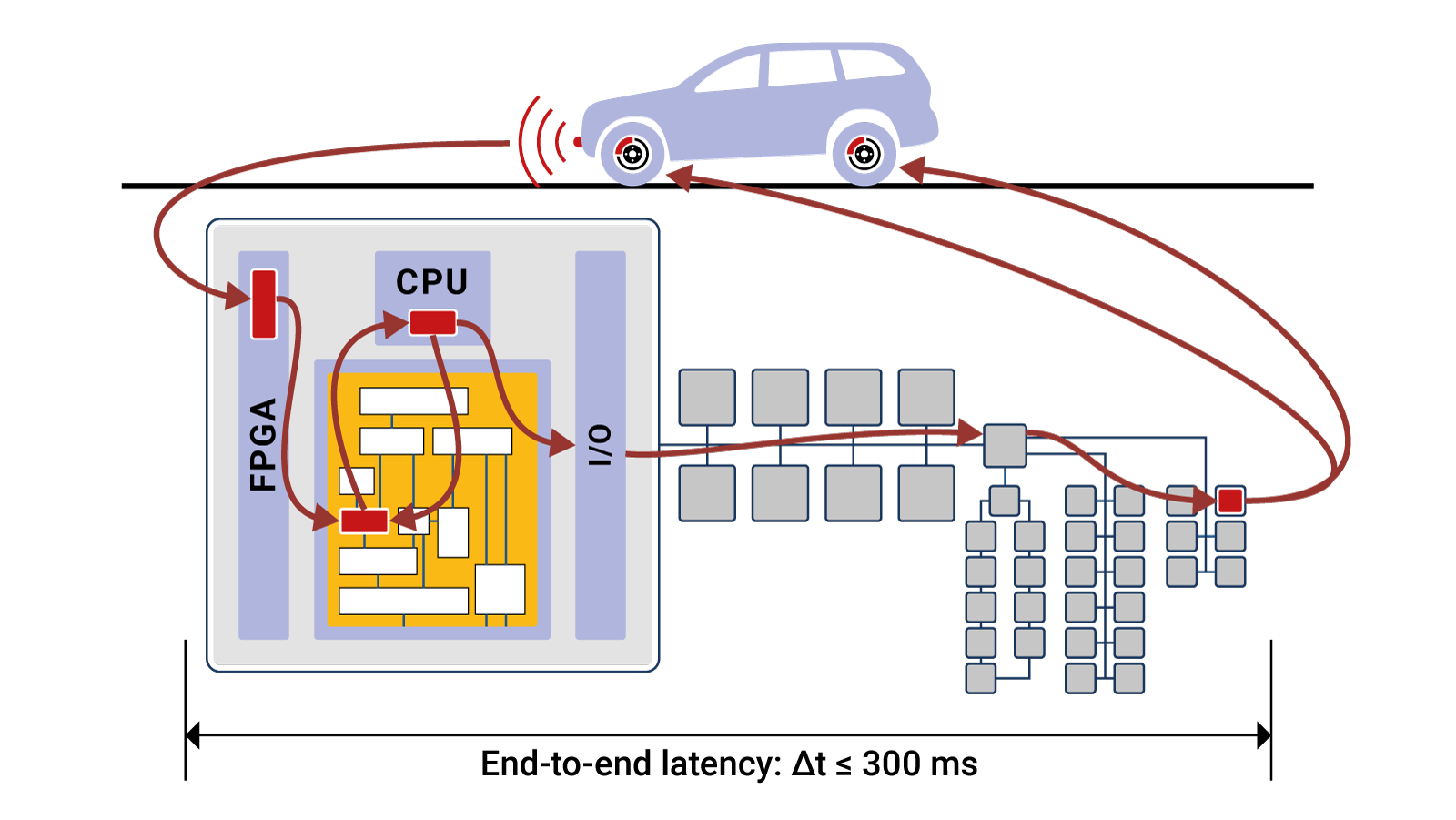Developing Autonomous Driving Systems –
An Exciting and Challenging Journey
Event Chains - a Basic Concept for Success in Autonomous Driving
Look for example at an emergency breaking assist. The maximum end-to-end latency must be less than 300ms from the point in time when an obstacle pops up, until the car starts breaking. The end-to-end event chain goes through 3-5 embedded control units (ECUs) and 4-6 buses. Several suppliers are responsible for their respective parts of the event chain; this is what they actually limit their focus on. Overall, it’s the OEM’s responsibility to ensure that end-to-end latency requirements are met under all circumstances.
Indispensable Development Steps for Success in Real-Time
For today’s ADAS, about 50 time-critical event chains have to be jointly optimized to meet all real-time requirements. When it comes to fully autonomous driving, it will be well above 1000 time-critical event chains.
For such an increasing number of time-critical event chains, designing a robust and scalable vehicle architecture is as important, as it is for the system and software architecture of a single ECU. The flexibility to optimize the mapping of software components to cores, CPUs or ECUs will be crucial to avoid overload situation. Finding issues early in the development process requires virtual verification, as well as strong focus on event chains during the test phase.
For all these development steps, the INCHRON chronSUITE comes in handy, with model-based simulation and trace-based analysis & test.

